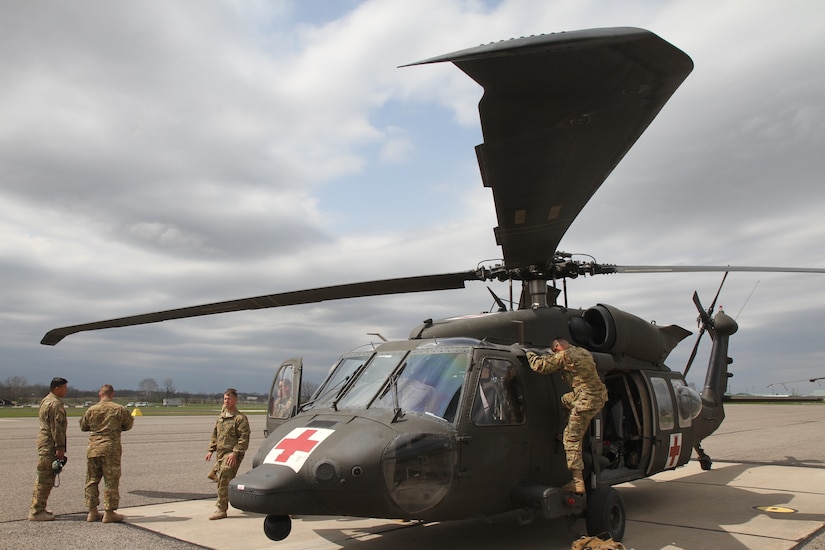MUSCATATUCK URBAN TRAINING CENTER, Ind. -- Smoking buildings
lay ruined. Debris and clothing are scattered across the landscape. Vehicles,
some tipped topsy-turvy, are strewn along roads and paths. Human cries for help
can be heard, calling out for someone to save them.
Skyward, the distant beating of rotor blades indicates that
rescue helicopters are on the way.
Fortunately, this is only a training scenario as part of the
U.S. Northern Command-hosted Guardian Response 18 exercise, which takes place
here through April 30. The center is located southeast of Camp Atterbury,
Indiana, its sister training facility.
Fort Bliss, Texas-based soldiers from Charlie Company,
2-501st "Desert Knights" General Support Aviation Battalion, 1st
Armored Division, soar in on HH-60M Black Hawk helicopters. They are here to
train to validate their ability to assist with defense support of civil
authorities in the event of a chemical, biological, radiological or nuclear
catastrophe.
Leaders say this training is all about saving lives and
preventing suffering.
“Normally, at Fort Bliss, Texas, we train for a
decisive-action fight, for the next conflict, the next war. It is very
different,” said Army Capt. Nicholas Schaefer, Charlie Company’s commander.
Different Kind of Training
The Guardian Response exercise “is different because we’re
supporting the home front,” Schaefer said.
During this exercise, flying into an urban setting offers
new challenges, he said. There are power lines. Debris or trash on the ground
can get kicked up into the helicopter’s rotors. Crowds of people rushing toward
helicopters is also a huge concern for crew chiefs and flight medics.
“There are a lot more dynamics in an urban environment,”
Shaefer said. “We really have to be on our game when landing and departing from
an environment like Muscatatuck.”
In the scenario, there’s a blast and radioactive plume with
a trail of damage. The soldiers and their helicopters are placed outside of
that plume, upwind and away from a nuclear blast at a safe airfield. They
provide external support for displaced civilians, aid the injured, assist
medical sites on the ground and evacuate patients and casualties.
The helicopters basically function as airborne emergency
rooms capable of transporting six litter or six ambulatory patients or a mix of
both.
Flight crews will have the opportunity to train on the
latest high-tech medical gear called Medical Ultra Wideband Broadcast, or
MEDHUB. It is a hands-free system that uses Bluetooth technology to capture
data, including patient information, inventory and arrival times.
Normally, when treating patients on the front line, medics
often must transcribe patient information on cards or memorize the data. The
new technology will help speed up the process and inform the receiving hospital
physicians on the patients’ status before they arrive.
“They will be better able to make decisions for the patient
based on all of this data being transmitted,” said Army Staff Sgt. Spencer
Anderson, a crew chief with Charlie Company. “Not only that, but the
information will travel all the way up to division level almost in real time as
it updates every two minutes.”









No comments:
Post a Comment